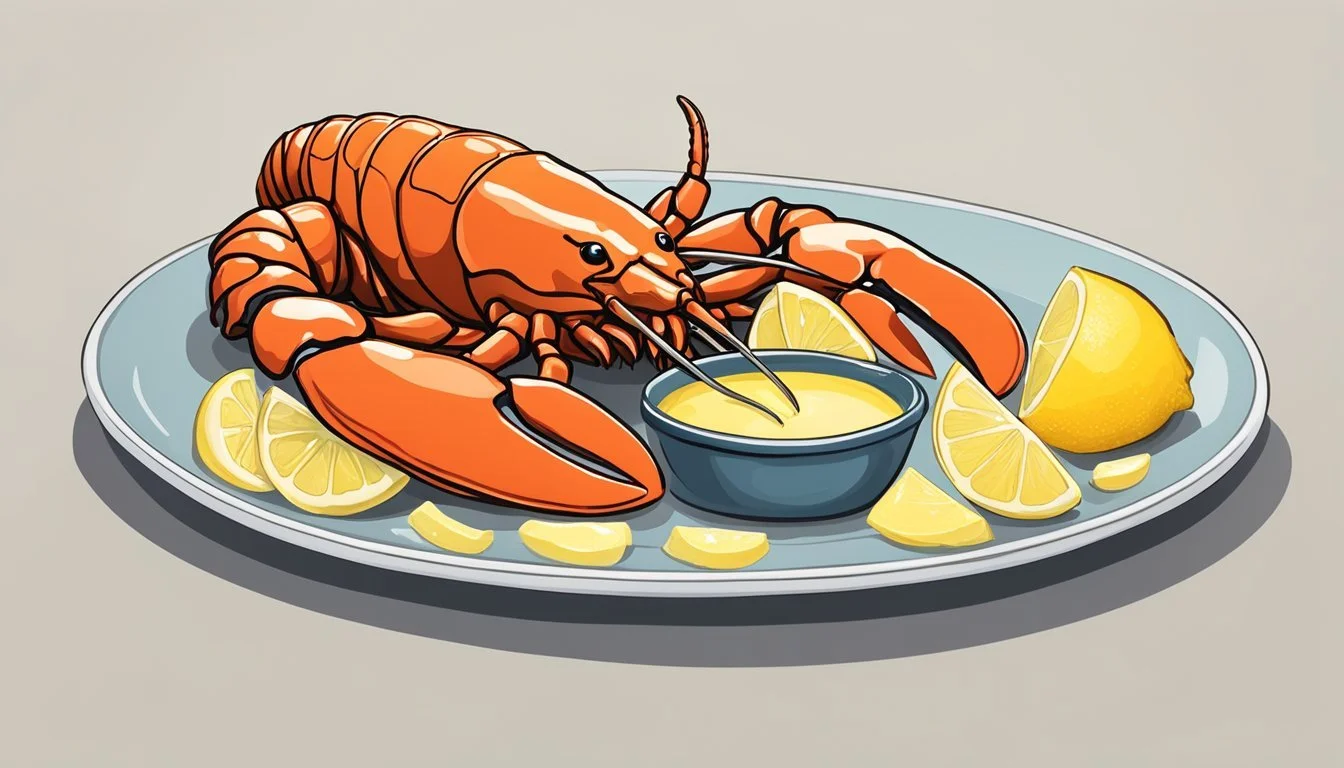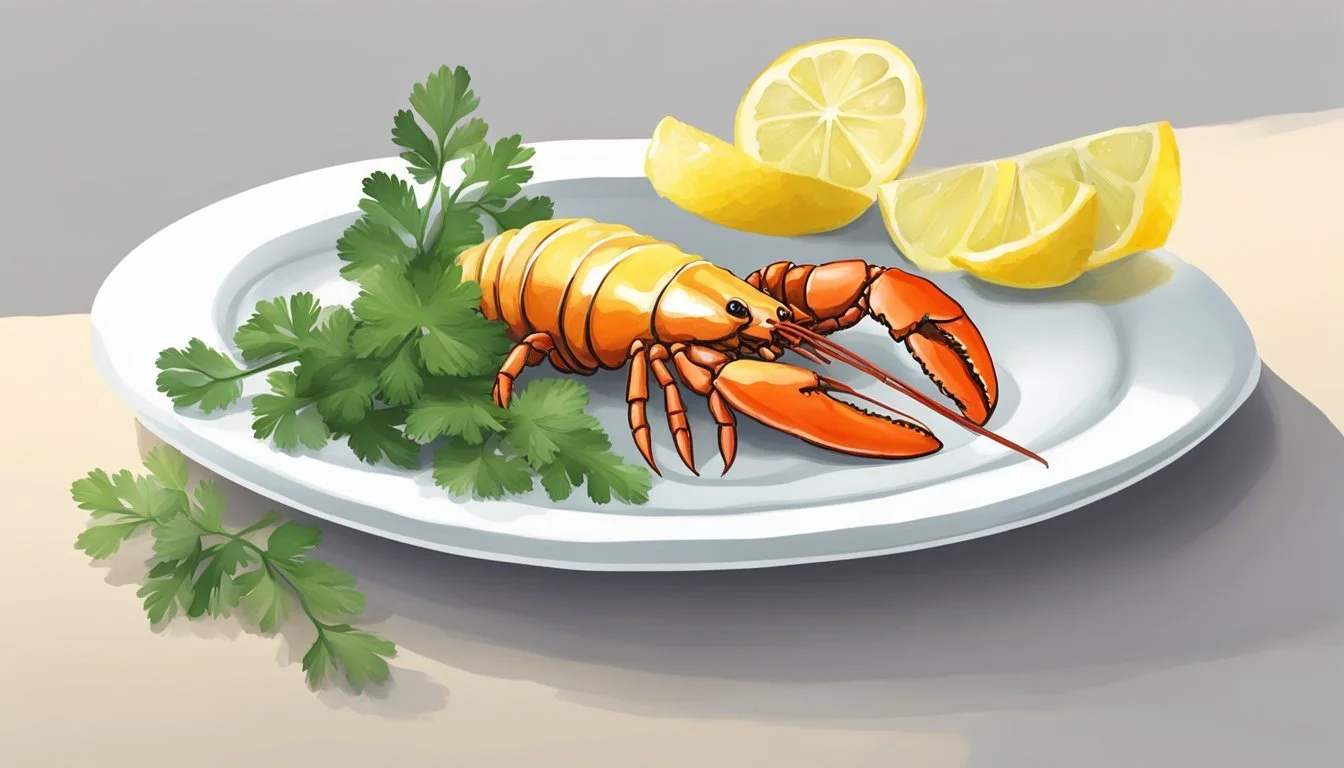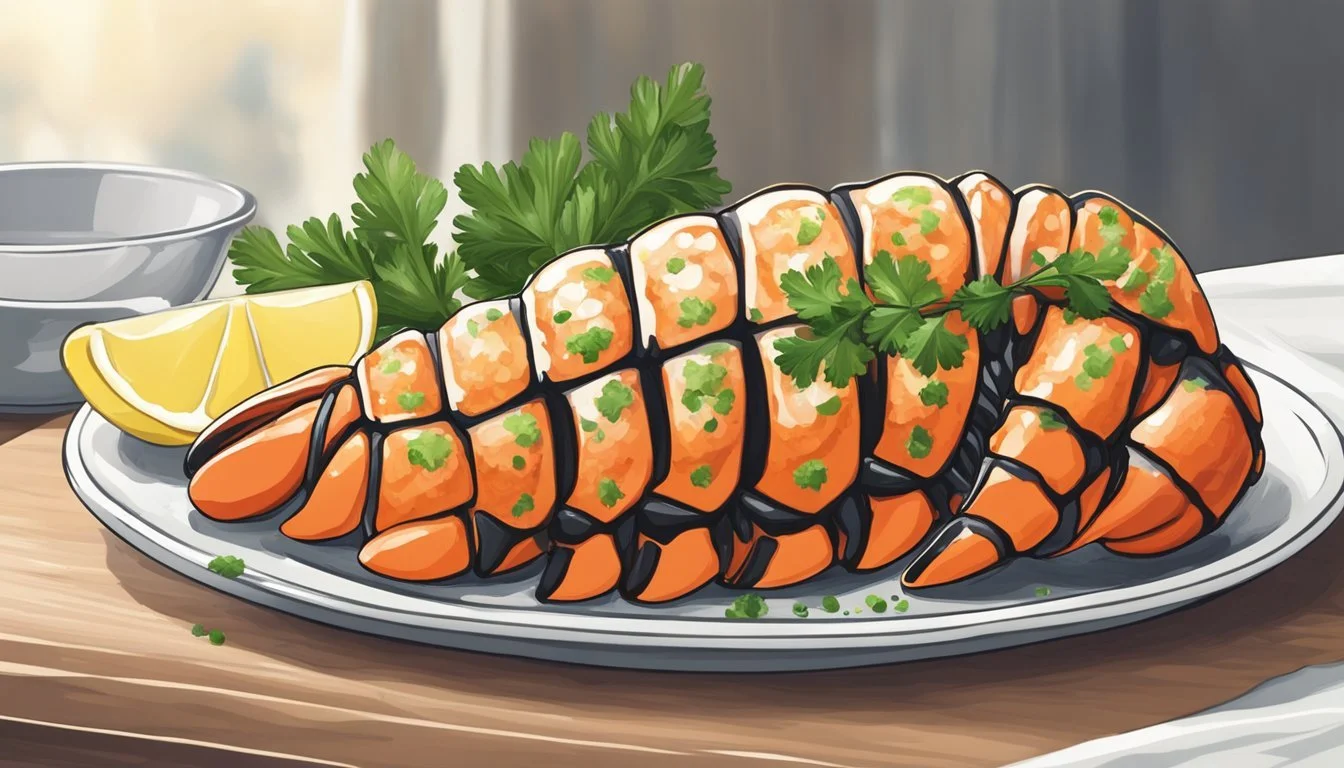How do you eat a lobster tail?
A Step-by-Step Guide to Enjoying This Delicacy
Eating lobster (What wine goes well with lobster?) tail is a culinary experience that often marks special occasions and indulgent meals. As a sumptuous and savory component of seafood, it requires a certain finesse to enjoy fully. While the process may appear daunting to newcomers, with a few simple steps, anyone can savor lobster tail like a seasoned enthusiast. The tail is where a significant portion of the meat is concentrated, making it a prized part of the lobster.
To access the succulent meat, the tail must be prepared correctly. It typically involves cutting through the shell which can be achieved with a pair of kitchen shears or a sharp knife. Once the shell is pierced, it can be cracked open to reveal the meat inside. A lobster tail can either be served cold or warm and can be prepared in various ways, including boiling, grilling, or broiling which enhances its natural flavors and texture.
Oftentimes, the lobster tail is presented alongside melted butter, lemon wedges, and seasonings which complement its rich taste. Strategic cuts and the careful removal of the shell segments ensure a delightful experience with minimal effort. Despite its perceived intricacy, consuming lobster tail is straightforward once the initial steps are understood.
Types of Lobster Tails
When discussing lobster tails, it's essential to distinguish between the primary types available in the market: cold-water and warm-water lobster tails. This segmentation is based on the areas where the lobsters are harvested.
Cold-water lobster tails are renowned for their higher quality due to the environment in which they are found. These lobsters, typically from areas like the North Atlantic, are often associated with Maine lobsters, a prized type known for their sweet, succulent meat and a firm texture that's highly sought after. Maine lobsters have a distinctive characteristic: their large size, which provides an abundance of meat in the tail.
On the other hand, warm-water lobster tails often originate from waters near Latin America, the Caribbean, or Florida. They generally yield less meat and can have a different texture and flavor than their cold-water counterparts; sometimes they're considered to be slightly tougher and not as rich in flavor.
Buyers should be aware that lobster tails can vary widely in terms of taste, texture, and overall dining experience. Here's a brief comparison:
Cold-Water Lobster Tails:
Usually from the North Atlantic
Commonly associated with Maine lobsters
High quality, sweet flavor, and firm texture
Typically more expensive due to their superior characteristics
Warm-Water Lobster Tails:
Often sourced from areas like Florida, the Caribbean, or Latin America
May possess a different, sometimes milder flavor
Can yield a slightly tougher texture
Generall more affordable option
When choosing lobster tails, consider the origin as it significantly affects the dining experience. For a quintessential lobster tail experience, many seafood aficionados prefer cold-water lobster tails for their exceptional taste and texture.
Before You Begin
Before indulging in the rich flavor of lobster meat, one must select the finest tails, properly thaw them, and prepare the workspace with the necessary tools and ingredients.
Choosing Quality Lobster Tails
One should look for lobster tails that are plump and display a bright shell color, indicating freshness. An absence of discoloration or freezer burn is crucial when inspecting frozen lobster tails. The weight of the tail is a good indicator of meat quantity; heavier tails often contain more meat.
Thawing Frozen Lobster Tails
To thaw frozen lobster tails, it's recommended to place them in the refrigerator for approximately 24 hours prior to cooking. This gradual process ensures that the tails maintain their texture and flavor. If a quicker method is needed, one can submerge the tails in cold water for a couple of hours, changing the water every 30 minutes to ensure even thawing.
Preparing the Workspace
An orderly kitchen workspace facilitates a hassle-free experience. One should have a clean countertop and arrange all the required tools — kitchen scissors and a sharp butcher's knife for cutting, a bib for cleanliness, and any additional ingredients for seasoning. Ensuring these items are within reach streamlines the process of accessing the succulent lobster tail meat.
Cooking Methods
Cooking lobster tails to perfection involves various techniques that cater to different tastes and preferences. Each method has its nuances that can affect the flavor and texture of the meat.
Boiling Lobster Tails
To boil lobster tails, one needs a large pot of salted boiling water. The tails should be immersed in water for about 1 minute per ounce, ensuring they are cooked until the shell turns red and the meat becomes opaque and tender. A fork can be used to check if the meat is done.
Steaming Lobster Tails
Steaming provides a gentler cooking method, which can yield tender steamed lobster tails. A pot with an inch of water should be brought to a boil. Placing the tails on a steaming rack above the water level, they should steam for about 6-8 minutes, keeping the meat moist.
Grilling Lobster Tails
For grilling, one should first preheat the grill to medium-high. Lobster tails can be brushed with a mix of olive oil and garlic for added flavor. They should be placed shell-side down and grilled for 5-10 minutes until the meat is opaque and slightly charred.
Broiling Lobster Tails
Broiling requires preheating the broiler. Butterflied lobster tails are placed shell-side down on a broiling pan. Broil for about 1 minute per ounce of each tail until the meat is no longer translucent.
Baking Lobster Tails
Baking in an oven preheated to 350°F allows a whole tail to cook evenly. Butterflying the tail helps the meat cook thoroughly. Bake the tails for 1 to 1.5 minutes per ounce, making sure the meat reaches an internal temperature of 140°F to 145°F.
Using an Air Fryer
An air fryer provides a fast and efficient way to cook lobster tails. Set to 380°F, butterflied lobster tails are cooked for about 5-7 minutes. It’s important to avoid overcrowding to allow hot air to circulate and cook the tails evenly.
Step-by-Step Cooking Guide
Cooking lobster tails at home can be simple and satisfying with the proper technique. This guide presents steps to butterfly, season, cook, and serve lobster tails, ensuring tasty and presentation-worthy results.
Butterflying Lobster Tails
To begin, one must ensure the lobster tail is thawed completely. Butterflying makes it easier to access the lobster meat and provides a classic presentation. Place the tail shell-side up, and using kitchen shears, cut lengthwise through the center of the hard shell and fan out the tail slightly. Carefully loosen the meat and lift it through the cut shell while leaving it attached at the end, resting it on top for an eye-catching display.
Seasoning the Lobster Tails
Lobster's flavor is enhanced with the right seasoning. Mix together kosher salt, a dash of paprika, ground black pepper, and chopped parsley for a balanced and aromatic seasoning. Sprinkle the mix evenly over the prepared lobster meat, making sure not to overwhelm its natural taste.
Cooking Lobster Tail
Lobster tails can be cooked using various methods like grilling, broiling, or steaming. For broiling, place the tails on a baking tray about 10 inches from the heat source and broil for approximately 1 minute per ounce of individual tail weight until the meat is opaque and slightly firm to the touch. Be careful not to overcook, as this can make the meat tough.
Serving Suggestions
Serve lobster tails immediately after cooking for optimal taste and texture. Accompany each tail with butter melted and seasoned with lemon juice for dipping. Garnish the plate with lemon wedges to add brightness. Lobster tails pair well with fresh salad, or if the meat is removed from the shell, it can be used to make luxurious lobster rolls.
Safety and Considerations
Eating a lobster tail can be a delightful experience when done correctly. It's crucial to address safety concerns, such as handling toxins and using the right tools, to ensure a pleasant dining experience.
Handling Tomalley and Toxins
The tomalley in a lobster, which functions as the liver and pancreas, can sometimes contain toxins that are harmful if consumed in large quantities. It's a green substance found within the body cavity. One should moderate their intake of tomalley and stay aware of any advisories from health departments regarding shellfish toxins in the area.
Using Proper Utensils
To safely extract lobster meat, one should use the proper utensils:
Fork: Use a fork with long, narrow tines to retrieve meat from hard-to-reach areas.
Sharp Knife: A sharp knife is essential when splitting the lobster tail to access the meat. Firmly hold the lobster tail and cut through the center of the underside to prevent slipping and potential injury.
Avoiding Overcooking
Overcooked lobster can become tough and lose its delicate flavor. To avoid overcooking:
Boil water and add the lobster tail.
Cook for approximately 4-5 minutes, or until the meat is opaque and firm to the touch.
Using a timer can help ensure that the lobster is cooked to perfection.
Pairings and Garnishes
When enjoying lobster tail, the right pairings and garnishes can significantly enhance the dining experience. The following suggestions are crafted to complement the delicate flavors of lobster:
Lemon: A squeeze of fresh lemon juice is not only traditional but it adds a bright, citrusy zing that lifts the flavors of the lobster.
Butter Varieties:
Clarified butter offers a pure, dipping delight, free from milk solids, thus allowing the lobster's flavor to stand out.
Garlic butter, infused with minced garlic, provides a rich and aromatic accompaniment.
For those favoring simplicity, unsalted butter allows for the natural taste of lobster to shine, with the option to season to one's preference.
Wine Pairing: A glass of dry white wine, such as a Chardonnay or Sauvignon Blanc, is an excellent choice for balancing the richness of the lobster. The crispness of these wines contrasts well with the succulent meat.
When choosing garnishes, one should aim for options that support rather than overpower the main attraction. Delicate herbs such as parsley or a sprinkle of chives can add color and mild flavor. Ultimately, the garnishes and pairings should be thoughtfully selected to elevate the taste of the lobster tail, ensuring a harmonious and sophisticated dining experience.
Finishing Touches
After preparing the lobster tail, the presentation and a few festive touches can enhance the dining experience. These final steps are crucial to making a lasting impression whether dining at home or in a restaurant.
Presentation Tips
Serving Plate: Choose a plate that contrasts the lobster tail's vibrant red color. A crisp, white plate offers a classic look.
Lemon Wedges: Place lemon wedges around the tail for a splash of color and to provide a zesty accompaniment that guests can squeeze over the lobster to enhance its flavor.
Parsley Garnish: A sprinkling of finely chopped parsley not only adds a fresh taste but also brings a pop of green color to the presentation.
Making Lobster More Festive
Themed Decor: For a special occasion, consider adding thematic decorations to the table. Nautical elements like seashells or anchor motifs can evoke the seaside ambiance.
Festive Tableware: Use tableware with bright colors or patterns to bring a cheerful and celebratory mood to the meal.
By paying attention to these details, diners can elevate the simple act of eating lobster tail into a memorable and festive dining experience.
Additional Recipes and Ideas
For those interested in expanding their culinary repertoire with lobster tails, there are numerous recipes and methods to explore. Here are a few ideas to consider:
Lobster Mac and Cheese: Enhancing the classic comfort food with chunks of lobster tail can create a rich and indulgent dish. The lobster provides a luxury spin on traditional mac and cheese.
Grilled Lobster Tail: Quick and simple, grilling lobster tails with a butter, garlic, lemon juice, smoked paprika, and a touch of cayenne can add a smoky and spicy flavor profile that's hard to resist. The grilling technique adds a unique charred taste to the seafood.
For a simple but elegant preparation, try the following:
Boil lobster tails in heavily salted water until the internal temperature reaches 135 to 140ºF, ensuring the meat is opaque throughout.
For an extra kick, stuff the lobster tail with a crab filling before baking, creating a double delight of seafood flavors.
Additionally, consider these serving ideas:
Serve lobster tails over a bed of fresh greens for a light, healthy meal.
Pair with a bearnaise sauce for dipping to add a touch of creamy richness to the dish.
Create lobster rolls by chopping cooked lobster tail and mixing with a touch of mayonnaise, fresh lemon juice, and herbs, served in a butter-toasted roll.
By utilizing various methods of preparation—baking, grilling, boiling, and even incorporating lobster into other dishes—one can truly showcase the versatility of lobster tails in a range of recipes.






